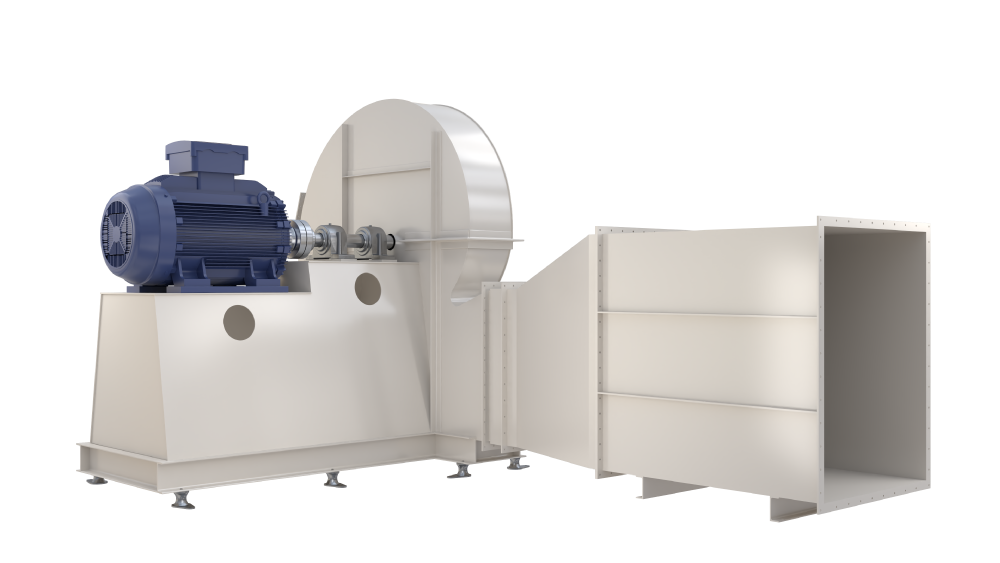Model FC-BHCS
Single Inlet, Coupling Drive
Performance Characteristics
- In these systems, the connection of the impeller to the motor is indirectly and coupling-wise.
- The design of these types of fans is based on the impeller method with Impeller Between Bearing and Impeller Overhung configurations according to the AMCA standard.
- The air capacity can reach up to approximately 350,000 cubic meters per hour.
- The static pressure can go up to around 25,000 pascals.
- The diameter of the fan impeller can reach up to 1600 millimeters.
- The inlet air volume can be adjusted using dampers or by changing the speed frequency.
- These series of fans can operate suitably within a temperature range of -40 to 500 degrees Celsius.
- The positioning of the outlet mouth relative to the inlet and its angle concerning the horizon can be chosen according to the AMCA standard.
- The ability to install any accessories such as dampers, silencers, bird screens, chassis, etc., exists on these air handlers.
- These fans are primarily used in systems for collecting and transferring gases, materials, and polluted air.
- Based on the capacity and performance efficiency of the fan, the impeller blades can be designed as Backward Curved, Backward Inclined, or Radial.
- The vibration balance of these fans is in accordance with the ISO standard DIN ISO 1940-1 grade G, with a maximum of 6.3 mm/s.
Special Design Methods
- In environments with high corrosion and acidity, stainless steel 304 or stainless steel 316 materials are used for the body and impeller of the fans (stainless steel fans).
- In the presence of flammable gases and dust in the environment where the fan is installed, to prevent sparks and explosions, the fan is completely isolated from the surrounding environment. Additionally, a layer of copper or composite insulation is used on the potential collision area of the two-metal impeller and fan body (Explosion & Spark proof Fans).
- Centrifugal fans in industries such as oil, gas, and petrochemicals are designed and manufactured according to the international standards API 560 & API 673.



